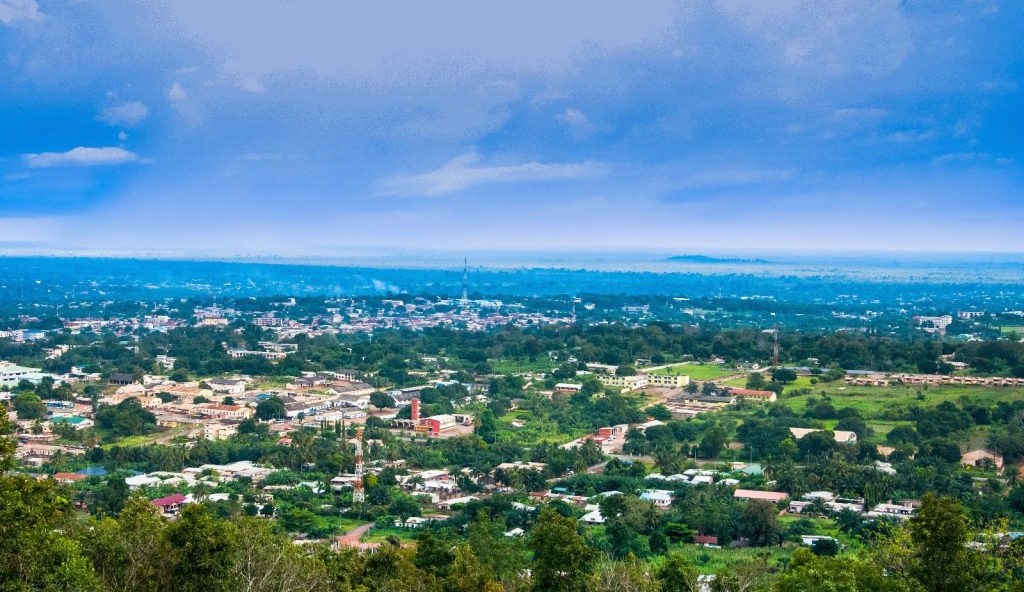No products in the cart.
Míexɔ wò nyuie ɖe volta nutoa me, teƒe si nànya nu geɖe tso alẽtsuwo ƒe amewo kple nyadzɔdzɔwo ŋu le
- My Account
- Members
- News
- sports
- Sport-videos
- Volta FA Profile
- Volta Football Teams Profile
- Submit Volta Football Team profile
- Volta basketball Association Profile
- Volta Basketball Teams Profile
- Submit Volta Basketball Team Profile
- Beach Soccer Teams profile
- Submit Beach Soccer Team Profile -VR
- All Leagues matches
- Ghana Premier League
- Ghana Division One League
- Business
- Entertainment
- Foreign
- Country
- History
- Voltaweb Shop
- LIVE RADIO
GARDENING IN CLAY SOILS
 VoltawebSeptember 30, 20213 Mins read46 Views
VoltawebSeptember 30, 20213 Mins read46 ViewsHOW TO IMPROVE CLAY SOIL IN THE GARDEN
Robin Sweetser
July 8, 2021
It is indeed sticky and heavy. Crusty and soggy. Gardeners use these phrases to describe their clay soil, not a band of misbehaving Disney dwarfs! While clay soil has drawbacks, it also has advantages. Let’s look at how to enhance clay soil and debunk some myths.
Balance is key in a good garden, as it is in a good life, and this is especially true when it comes to the texture of your soil. Let’s take a brief look at the various soil textures.
SOIL TEXTURE
Soil is made up of three different types of particles, all of which are combined together with organic matter. It’s not a good idea to have too much of any of these ingredients. Sand, silt, and clay in equal ratios would make ideal soil.
The largest particles are sand. They are oblong with big spaces between them facilitating the flow of air, water, and nutrients. Sandy soil drains swiftly, dries quickly, and retains little moisture. To give you a sense of their size, one gram of sand contains approximately 1,000 grains.
Silt particles are smaller than sand particles. Water has a hard time penetrating dry, silty soil, causing rain to flow off rather than soak in. Silt stores moisture better than sand once soaked.
are the littlest, are level and are effortlessly compacted.
Clay is a component here is practically no space between them for air or water to stream. Slow to deplete, dry out, or warm up, earth soil holds water well once it is wet—regularly to the reason behind being waterlogged. At the point when dry, dirt psychologists and breaks, framing a block like surface that is practically impervious. One gram of dirt has around 90 billion particles!
One approach to tell on the off chance that you have soil that is vigorously earth is to frame sodden soil into a ball; assuming you can do this effectively without the dirt disintegrating, it’s likely mud! Dirt soil
SOIL STRUCTURE
A few grounds-keepers imagine that by adding sand to their dirt soil it will “fix” the issue however it really is more similar to a formula for making concrete! You can’t change the surface of your dirt however you can work on its design.
Add natural matter and manure to help waste and ease up weighty soil. Humus particles are a lot bigger than dirt and they will append themselves to the better particles to frame groups called totals. These bigger totals make spaces for water, air, and supplements to stream to establish roots. Humus additionally ingests dampness and channels it rapidly. Organic should matter you can add as much as possible: 5 to 10% is great. Alongside fertilizer, leaf shape and matured compost are likewise incredible wellsprings of natural matter.
Prior to planting in spring, add fertilizer and matured excrement. A 2-to 3-inch layer worked into the dirt to scoop profundity is a decent sum. Make certain to add somewhere around half a month prior to planting to permit the material to separate.
- Use mulch to help reduce compaction of your clay soil from hard rainfall. It also prevents the soil from drying out and cracking. Organic mulch like straw or shredded leaves encourages worms and other soil organisms to live below it where they create tunnels which aerate the soil.
Throughout the growing season, keep adding mulch to your soil with grass clippings, shredded leaves, and/or straw. Also, mulch beds over the winter with a layer of straw or organic matter to protect the soil from driving rain and erosion.
- Plant cover crops to stabilize the soil, reducing erosion and loss of precious topsoil. Vigorous root systems found in many cover crops help to break up compacted soil and create deep channels. In the north, winter wheat and winter rye are popular choices; in warmer regions, crimson clover and oats are commonly used.
Sow your cover crop in the fall after the last crops have been harvested. The following spring, simply till the plants into the soil, adding yet more precious organic matter.
Diminish development. When extremely durable beds have been set up they will require insignificant burrowing. The more you burrow the more danger you take of annihilating the dirt design you have endeavored to improve.
Plant in squares to conceal the dirt and hold it back from crusting over.
Try not to stroll on or work with wet sloppy soil. The more compacted it gets, the less spaces for air, water and supplements to go through where roots can get to them. One thought is to put down wooden sheets on garden ways,
Ensure you garden columns aren’t in excess of a couple of feet across so you can arrive at the center without stepping in the bed.
Plant in raised beds which further develop seepage by empowering water to run off. The beds don’t need to be made out of wood or stone; even a straightforward raised hill of soil will help.
Walking on wet clay soil is not good for the garden or for your shoes!
Related Articles:
- Why protection broking is tied in with picking your own experiences
- TOP BEST ART-WORKS OF CALIFORNIA DESIGNERS.
- How is your top questions about car insurance for Australian seniors and pensioners.
- THE ART OF MODERN INTERIOR DESIGN
- Startling data gives insight into insurance market
- America’s Best Home Insurance
- 5-Star Brokerages
- Open house – using risk management to open historic houses to the public
- SMEs must pay attention to rising D&O and EPL risks
| NEWS SECTION |
|---|
| Educational News |
| Politics News |
| Health News |
| Country News |
| Volta Region News |
| FaFaa News |
| Press Release |
| Murder & Punishment |
| Africa News |
| Citizen Abroad |
| World BBC news |
| Ewe - Pride |
| SECURITY NEWS |
| READ MORE |
| OPINIONS |
| General Opinions |
| VOLTA TELEVISION |
| EwE 24 Tv news |
| Tosh TV |
| Volta General News Bloggers |
| Not Yet listed |
| Other News Section |
| General News |
| Sports |
| Entertainment |
| Business |
| Africa |
| Radio Stations |
Related Articles
General NewsGn-country news VoltawebMay 21, 2025
VoltawebMay 21, 2025
Why Is the Most American Fruit So Hard to Buy?
Pellentesque iaculis gravida nulla ac hendrerit. Vestibulum faucibus neque at lacus tristique...
 VoltawebMay 21, 2025
VoltawebMay 21, 2025
General News VoltawebJuly 23, 2022
VoltawebJuly 23, 2022
The Best Place to Celebrate Birthday and Music
Mauris mattis auctor cursus. Phasellus tellus tellus, imperdiet ut imperdiet eu, iaculis...
 VoltawebJuly 23, 2022
VoltawebJuly 23, 2022
General News VoltawebApril 17, 2022
VoltawebApril 17, 2022
Insurance ombudsman on “never-ending battle”
Being in the middle isn’t always easy – just ask Insurance &...
 VoltawebApril 17, 2022
VoltawebApril 17, 2022
General News VoltawebApril 17, 2022
VoltawebApril 17, 2022
IMF announces support for NZ Income Insurance Scheme
The International Monetary Fund (IMF) has announced its support for the NZ Income...
 VoltawebApril 17, 2022
VoltawebApril 17, 2022Services & Gov
- Volta Regional Coordinating Council
- VOLTA DISTRICT ASSEMBLIES
- Ghana Army (VR)
- Ghana Navy VR
- Ghana Immigration Service (VR)
- Ghana Police Service (VR)
- Ghana Prison Service VR
- Ghana Custom Service (VR)
- Ghana Fire Services (VR)
- ECG Volta Region
- Ghana Educations Services (V/R)
- Volta River Authority
- Ghana Health Service VR
Volta Sports Associations

Our Mobile Application App is coming soon! Stay tuned.
© Copyright 2022 voltaweb. All rights reserved.





Leave a comment